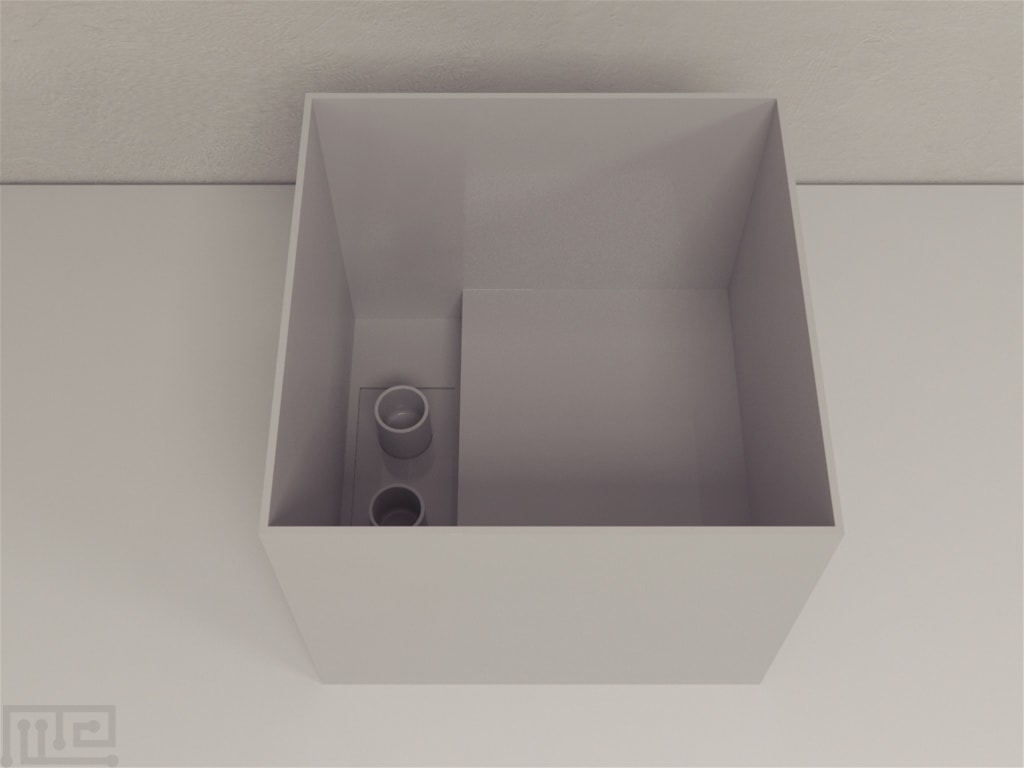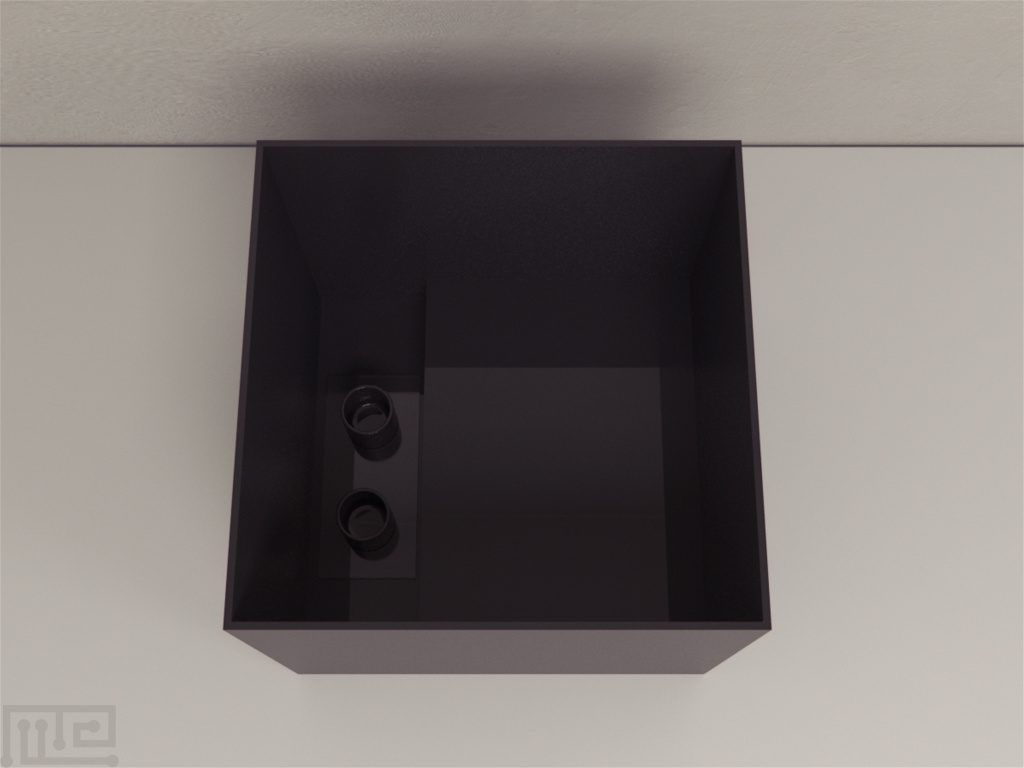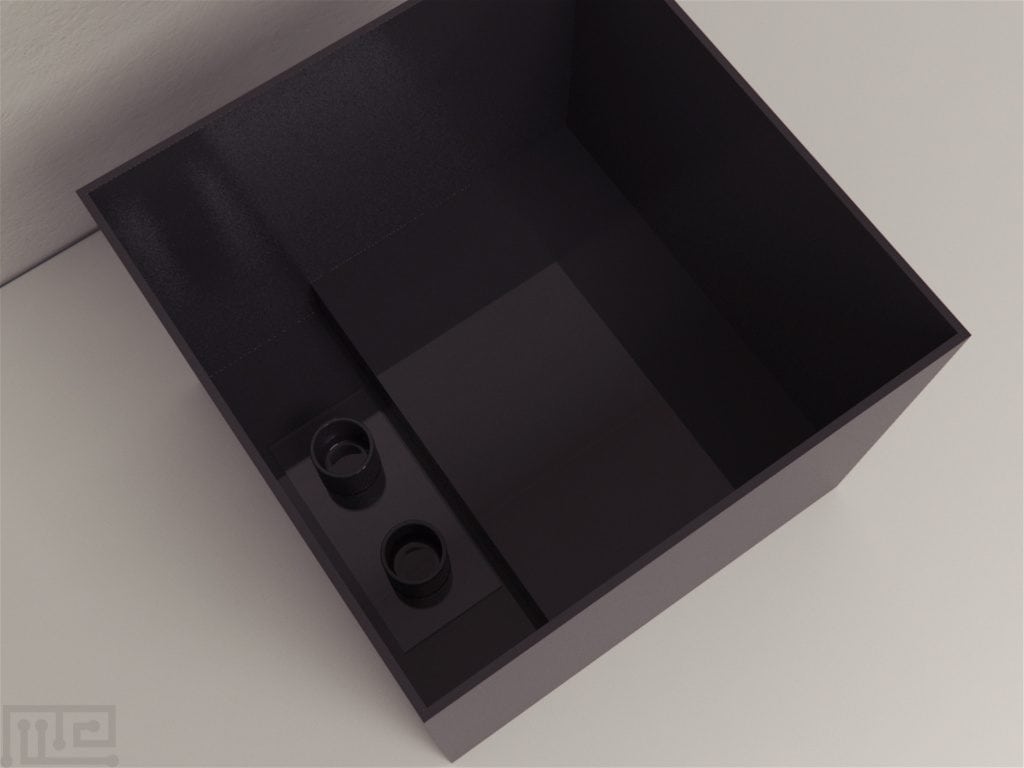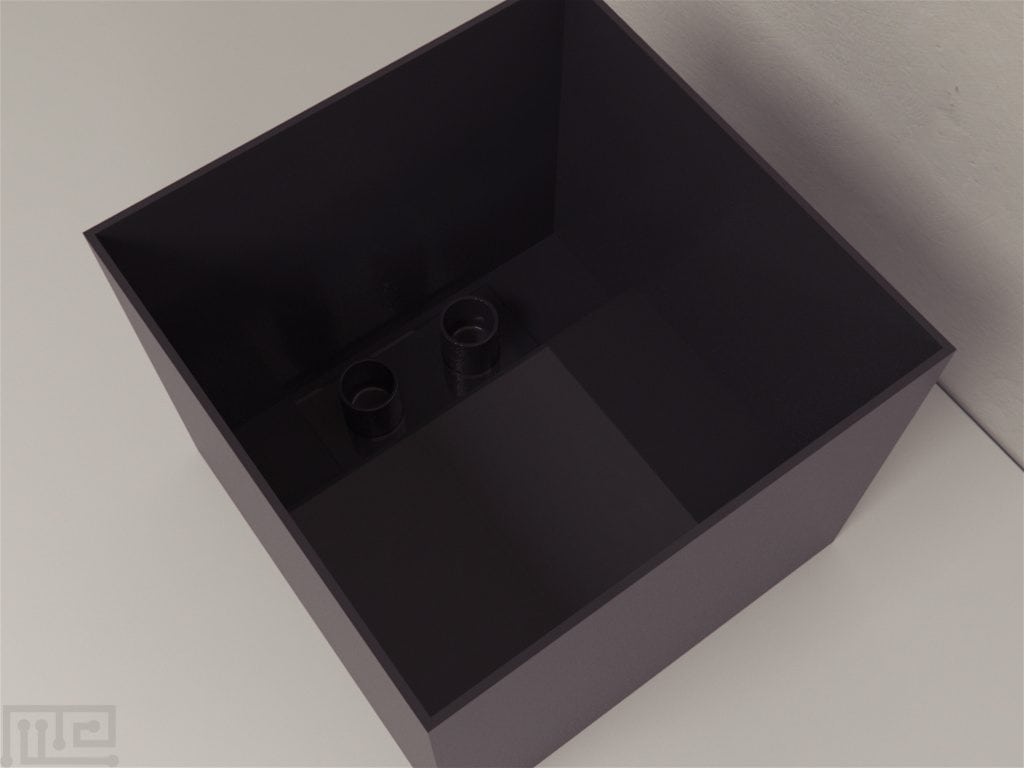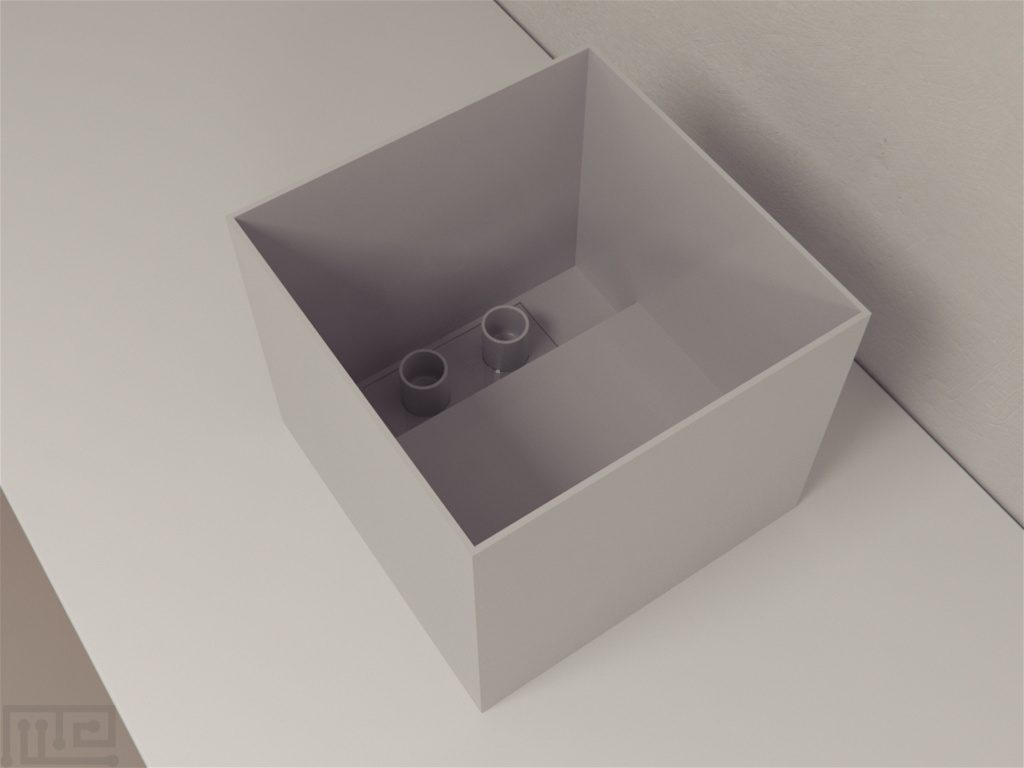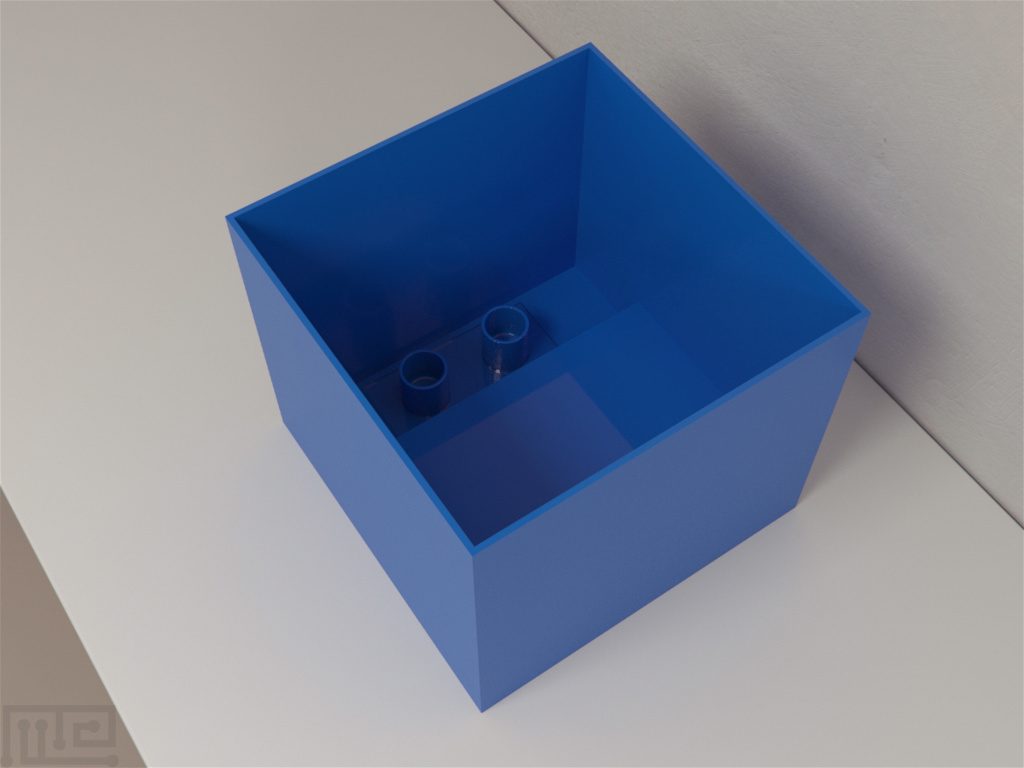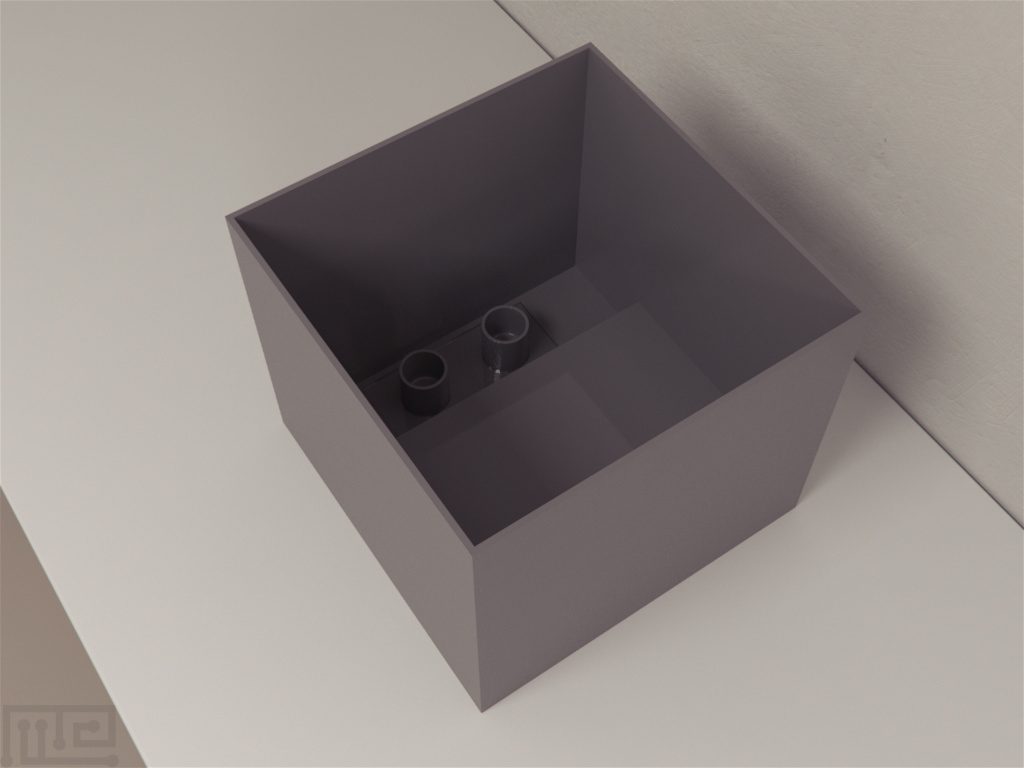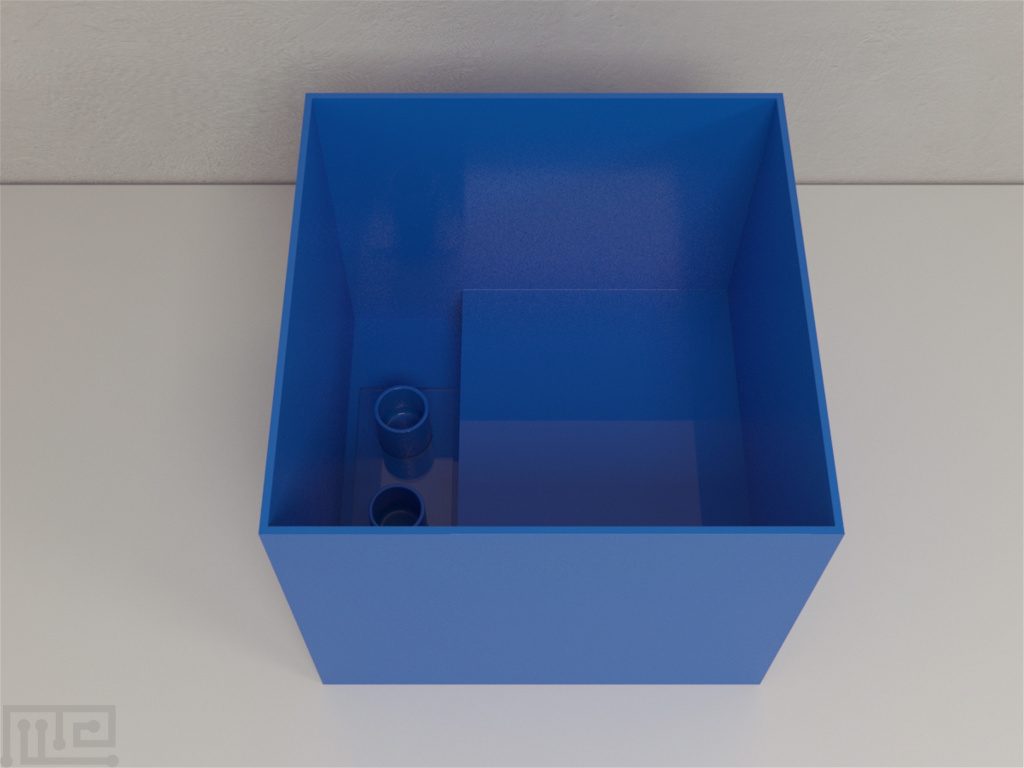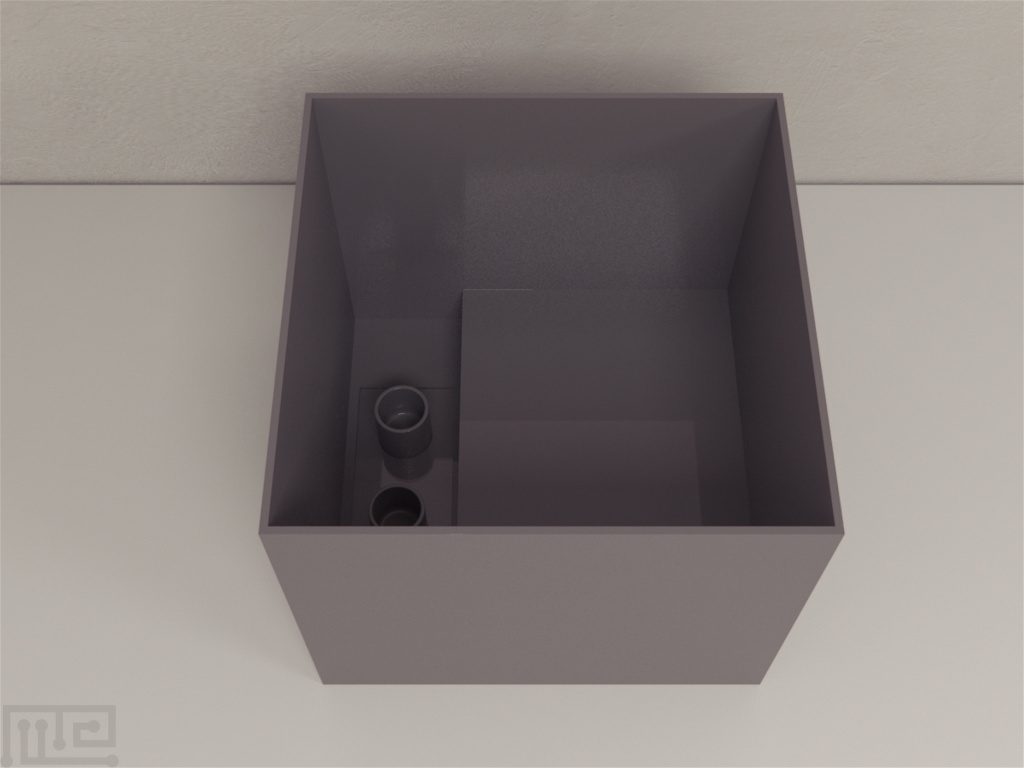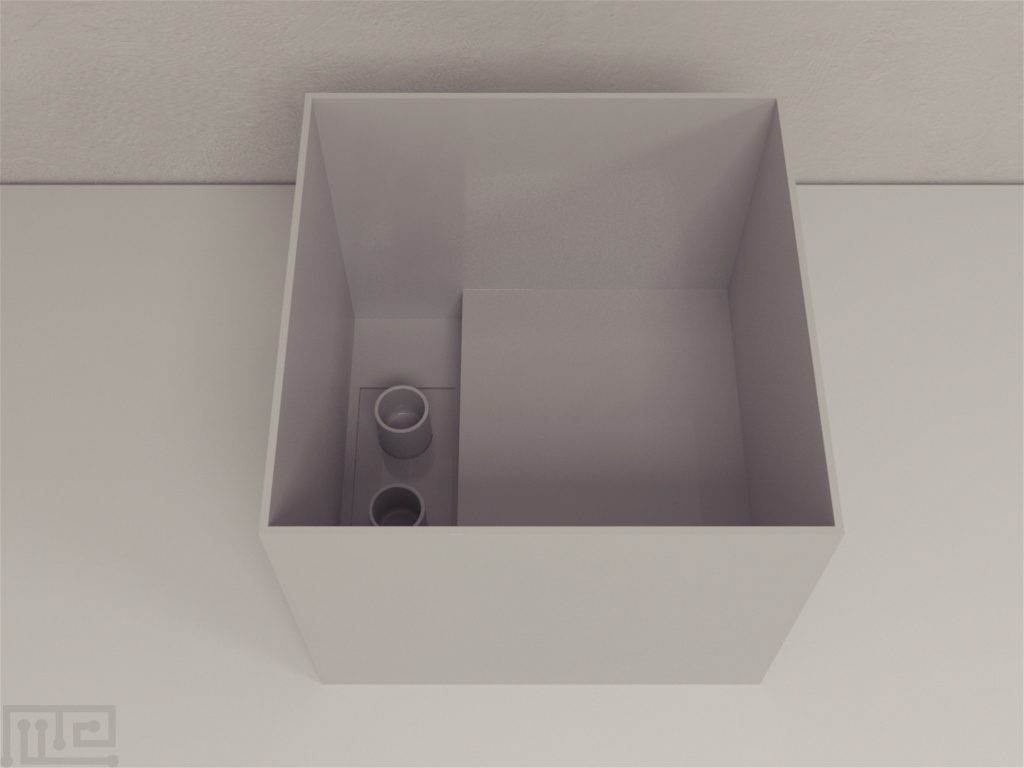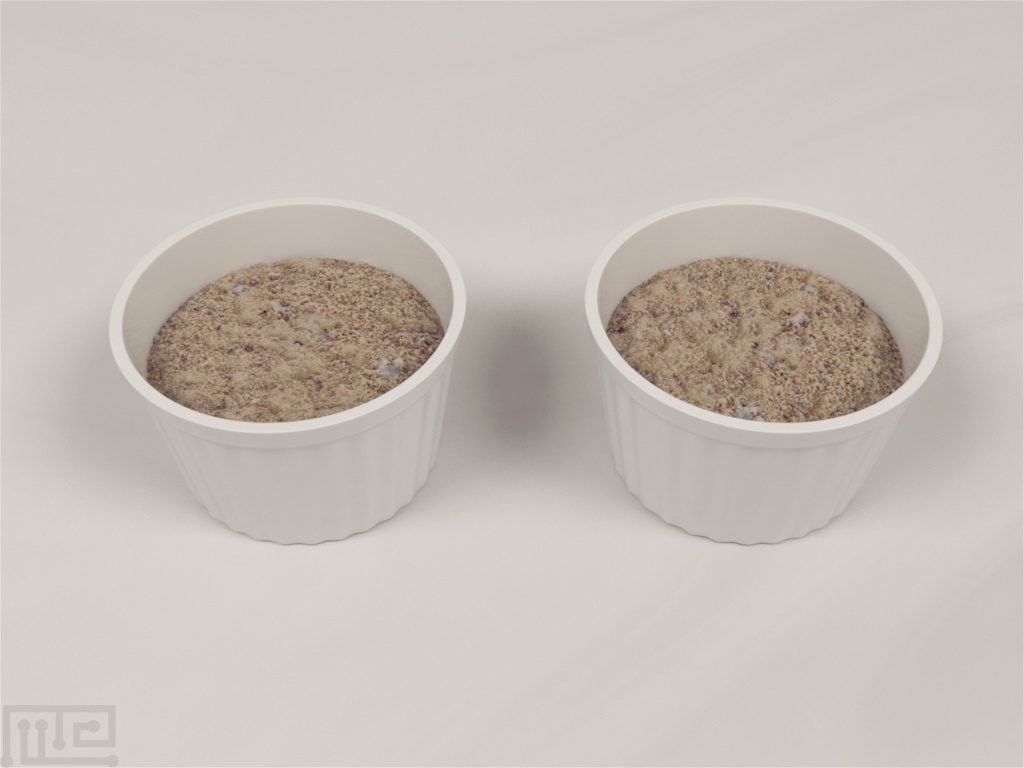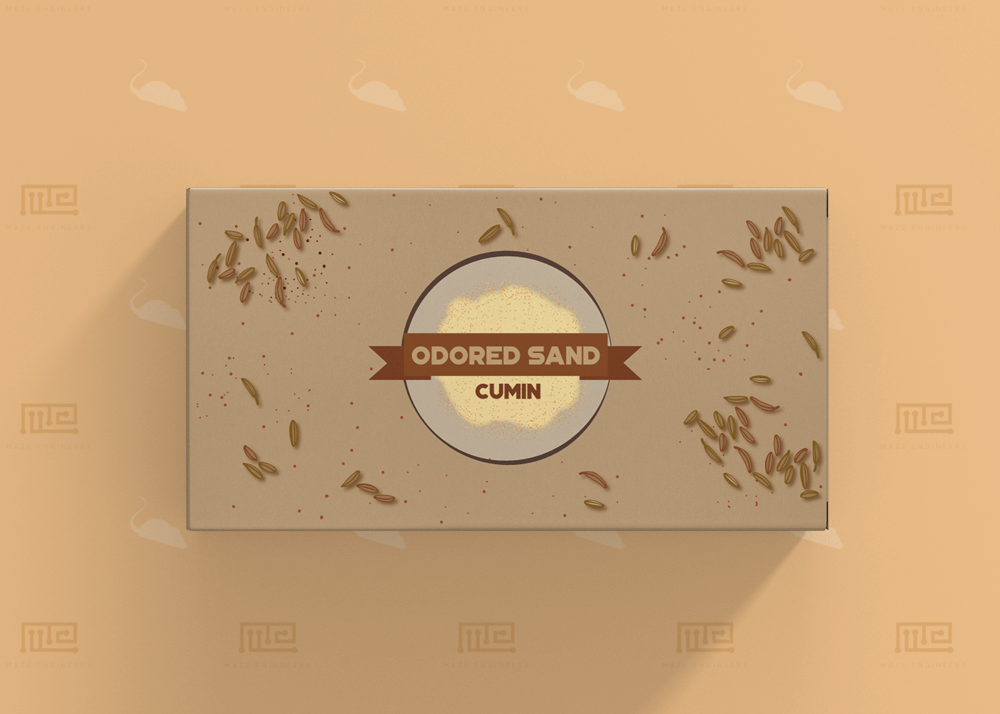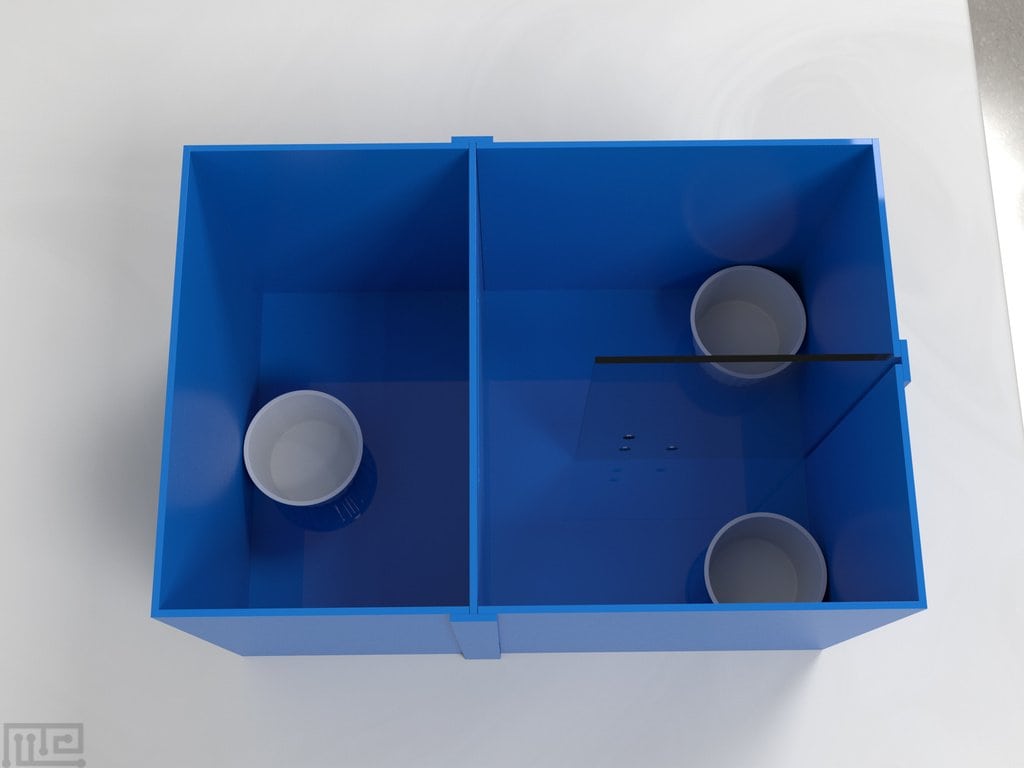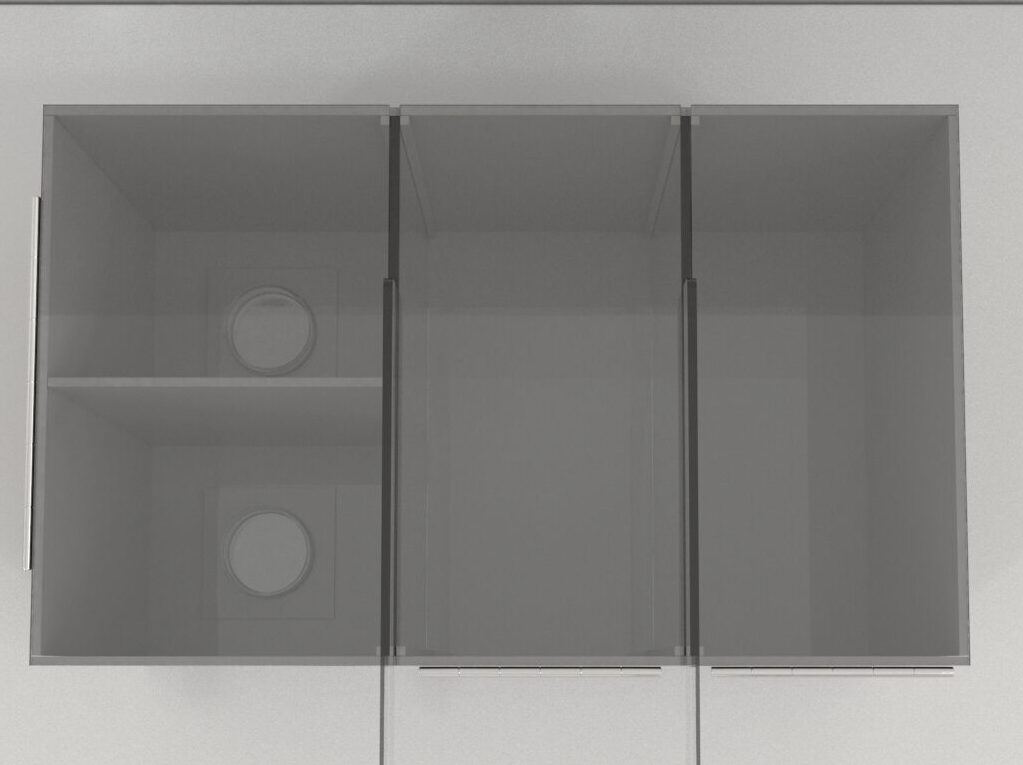The Dig Task was formally described by Martins et al (2013) to describe a simple experimental preparation that can assess deficits in rats with bilateral frontal cortical damage compared to rats with unilateral parietal damage. The Dig task is a wonderful test in a comprehensive cognitive test battery. The basic protocol utilizes a basic scent discrimination paradigm in order to assess deficits in cognition. The MazeEngineers kit includes the apparatus, 2 ceramic cups, as well as multiple premixed sand odor kits to easily start your experiment.
- Includes scented sands: cocoa, basil, cumin, coffee scented and mixed with clean sand. 1 g odorant to 110 g unscented, clean sand.
Price & Dimensions
Mouse
$ 1290
Per Month- 1 Chamber (L: 12in, W: 8in, H: 7in)
- Start area: 5in x 8 in. Testing area: 7in x 8in
- 2 Cups, Ceramic. Diameter: 2.5in, Height: 1.5in
- Full Odor Sand Kit
Rat
$ 1390
Per Month- 1 Chamber (L: 15in, W: 10in, H: 9in).
- Start area: 6in x 10 in. Testing area: 9in x 10in
- 2 Cups, Ceramic. Diameter: 2.5in, Height: 1.5in
- Full Sand Odor Kit
Documentation
Introduction
The Dig Task is an odor discrimination task designed to be a rapid and effective tool for evaluating cognitive dysfunction following traumatic brain injury (TBI) and stroke. Initially used by Kaiser et al. to study value transfer across odor stimuli using the probability of reinforcement in the rats, the dig task was later on used by Martens et al. for testing decision-making behavior in rats following traumatic brain injury (TBI).
The Dig task relies on the basic operant principles of learning and decision making (cognition) using a two-choice decision paradigm, which requires subjects to dig in the various scented sands for a reinforcer. Behavioral choice paradigms for studying decision-making behaviors used in Operant tasks are considered as the gold standard to some extent. Rodents have a well-developed olfactory system than their visual system. Therefore, most of the learning paradigms rely on rodent’s olfaction. The Attentional Set Shifting Task (ASST) is another similar, widely used task in rodents.
Dig task is imperative in determining the extent to which non-spatial cognitive tasks are able to translate to human TBI, particularly when compared to tasks that assess spatial learning such as the Morris Water Maze. The Dig Task has been used to compare frontal cognitive deficits with unilateral parietal deficits; however, it has not been tested in hippocampal damage model to date. Hence based on the data available, the dig task can be used to evaluate the effectiveness of a treatment on recovery of frontal cognitive deficits following brain injury. The Dig task can be modified to answer questions about more complex decision-making behaviors like impulsivity and generalized matching.
The task is conducted in a chamber containing two scent cups at one end. The subjects are allowed to discriminate between two scented sands, one of which contains a reinforcer. The trial ends after the subject digs in the correct scented sand, incorrect scented sand or 30 seconds elapse. The subject that correctly discriminates is allowed to consume the reinforcer and recover while the subject that incorrectly discriminates is immediately removed from the chamber. The trials are continued for a set number of trials with variations of the scented sands.
Apparatus and Equipment
The Dig task chamber is available in two sizes depending upon if the study is using rats or mice. The chamber used for mice has dimensions of 12 X 8 X 7 inches with a start area measuring 5 X 8 inches and a testing area of 7 X 8 inches. The chamber used for rats has dimensions of 15 X 10 X 9 inches with a start area measuring 6 X 10 inches and a testing area of 9 X 10 inches.
The testing area has 2 ceramic cups with a diameter of 2.5 inches and height of 1.5 inches. The ceramic cups are filled with scented sands which are made by mixing 110 grams of unscented clean playground sandbox sand with 1 gram of odorant including cocoa, basil, cumin or coffee. Fruitloop cereal pieces are used as the reinforcer.
Training Protocol
Animal handling before training
The subjects should be housed singly with 12-hour light and dark cycle and handled 3 to 5 days before training to familiarize them with human contact. Food restriction of subjects should be started at least three days before training to motivate them to perform the task. Subjects should be given 15-20 grams of food per day with unlimited access to water and maintained at 80%-90% of free-feeding weight with daily weight monitoring.
Prior to beginning the training, clean the entire apparatus to remove the presence of any unwanted stimuli from influencing the performance. The tests should be performed in a sound isolated test area that is well-lit. The tracking and recording of the trials can be performed using tracking and video system such as the Noldus EthoVision XT.
Dig Training
Each subject will undergo 8 session trials to complete dig training over a 4-day period according to the protocol described below before discrimination testing.
Session 1 – Completely fill the scent cups with the reinforcer (no sand). Place the subject into the start area and allow the subject to consume the reinforcer for 30 minutes freely.
Session 2 – Completely fill the scent cups with the reinforcer and pour a small amount of unscented sand into each cup, filling no more than half of the cup. Place the subject into the start area and allow the subject to consume the reinforcer for 30 minutes freely.
Session 3 – Fill the scent cups with an even mixture of reinforcer and unscented sand, leaving multiple reinforcers exposed. Place the subject into the start area and allow the subject to consume the reinforcer for 30 minutes freely.
Session 4 – Fill the scent cups with a mixture of 1 part reinforcer to 3 parts unscented sand, leaving 1-2 reinforcers exposed. Place the subject into the start area and allow the subject to consume the reinforcer for 30 minutes freely. The researcher should assist subjects that do not begin to uncover the reinforcer after a 10-minute period by uncovering one reinforcer at a time until the subject learns.
Session 5 – Fill the scent cups with a mixture of 1 part reinforcer to 3 parts unscented sand, leaving no reinforcers exposed. Place the subject into the start area and allow the subject to consume the reinforcer for 30 minutes freely. Subjects should be assisted by the researcher when required.
Session 6 – Place three reinforcers in deep, middle, and shallow positions in the unscented sand in each scent cup. Place the subject into the start area and allow the subject to retrieve all three reinforcers from each cup, assisting if needed. Transfer the subject into the holding apparatus for 15-30 seconds. Reset the scent cups as described in this session and repeat the process for a total of 4 trials.
Session 7 – Place a single reinforcer at half of the depth of the unscented sand in each cup. Place the subject into the start area and allow the subject to retrieve both reinforcers. Remove the subject and place it into the holding apparatus for 30 seconds. Reset the scent cups as described in this session and repeat the process for a total of 4 trials.
Session 8 – Fill cups as described in session 7. Place the subject into the chamber start area and allow the subject 30 seconds to retrieve both reinforcers. Remove the subject and place it into the holding apparatus when either both reinforcers have been retrieved or 30 seconds have elapsed. Reset the scent cups as described in this session and repeat the process for the number of trials that will be used in the testing phase.
Additional sessions for training may be used to familiarize the subject with the given scents.
Discrimination Testing
Choose a scent pairing and decide on the scent that will be baited with the reinforcer (correct discrimination). Place a single reinforcer at half of the depth of the baited scented sand in one of the cups. Place the subject into the start area facing the rear at equal distance from each cup. If the animal correctly discriminates, allow it to retrieve and consume the reinforcer, and then remove it to the holding apparatus for 30 seconds. If the subject chooses incorrectly or does not choose either scent within 30 seconds, remove it immediately and place it into the holding apparatus for 30 seconds.
Repeat this process using randomized trial structure by changing the location of scent cups with no more than three trials in a row being on a given side to reduce bias. Once the subject achieves a pre-determined criterion, for example,> 80% accuracy per day for three consecutive days, it is moved onto the next discrimination/reversal, and the process is repeated as above.
The number of discriminations and reversals, maximum number of days and trials, length of the trial, pretest prior to injury will be largely based on experimental question and should be preset by the researcher.
Evaluation of the ability of the Dig task to evaluate cognitive deficits following frontal and parietal injuries
Martens et al. study have shown that frontally-injured rats demonstrated severe deficits in memory for the initial discrimination, reversals of reinforcement and discrimination with novel scents. There were no deficits observed in parietally-injured rats on all scent discriminations and performance was similar to that of the sham subjects. The task was not affected by craniotomy as no differences were seen in sham subjects that underwent craniotomy as compared to those that did not.
Evaluation of scent discrimination following frontal brain damage
Martens et al. continued their work with the Dig task further developing the test. The study showed similar results as their previous research in rats with bilateral frontal brain injury showing significant deficits under virtually all types of learning including a deficit in memory for previously learned discrimination, difficulty in learning the reversal of that scent pairing and difficulty in learning novel discriminations. In contrast, unilateral parietal injuries in rats showed no deficits in memory for a previously learned discrimination, acquired the reversal discrimination and learned novel scent pairings very rapidly. There was a lot of variability in subjects with a bilateral frontal brain injury while little variation was seen in rats with unilateral parietal injuries.
Data Analysis
The following main variables are recorded in the Dig task:
- Correct/Incorrect choice
- Latency to initiate digging
- Trials in which the subject times out on.
The primary analysis is the accuracy of each scent pairing using cumulative proportion correct for each scent by summing the number of correct discriminations and dividing by the total number of trials for each discrimination.
Strengths & Limitations
Strengths
The Dig Task can be conducted fairly rapidly as compared to many other operant paradigms. This property of the test can be utilized to integrate it into any existing test batteries for TBI, stroke or other brain injuries. It provides options for researchers who do not have access to large banks of operant chambers for studying such decision-making processes.
The Dig task is useful in evaluations of previous learning, reversals, and novel acquisitions, most importantly effective in assessing deficits in non-hippocampal regions especially frontal function following brain damage.
The Dig Task can measure large-scale differences in injured versus intact animals and may prove beneficial for evaluating treatments for cognitive function post-TBI, an area that requires more investigation.
Limitations
Deficits due frontal brain injury that can interfere with an animal’s decision-making ability such as impulsivity cannot be assessed using the Dig task. The cellular changes after TBI either in the acute phase or during recovery can affect the output of the task.
The Dig task has a limited role until further studies are undertaken when studying effects of hippocampal-centered injury and also to identify differences between the dig task and other discrimination/behavioral choice paradigm tasks. Due to variations among different subjects, the rate at which the task is learned will differ, so the deficit observed during the task will be difficult to distinguish from being due to either lack of motivation or an inability to learn the task.
Summary and Key Points
- The Dig task is an odor discrimination task designed to be a rapid and effective tool for evaluating cognitive dysfunction following traumatic brain injury (TBI) or stroke.
- The task is conducted in a chamber containing two scent cups at one end. The subjects are allowed to discriminate between two scented sands one of which contains a reinforcer.
- Food restriction of subjects should be started at least 3 days before training to motivate them to perform the task.
- Each subject will undergo 8 session trials to complete dig training over a 4 day period before discrimination testing.
- The Dig Task has been used to compare frontal cognitive deficits with unilateral parietal deficits; however, it has not been tested in hippocampal damage model to date.
References
Daren H.Kaisera and Larry Means (2006). Value transfer across odor stimuli using probability of reinforcement in the rat. Behavioural Processes, 73(2), 164-169. DOI: 10.1016/j.beproc.2006.05.003
Kris M. Martens, Cole Vonder Haar, Blake A. Hutsell, and Michael R. Hoane (2012). A Discrimination Task Used as a Novel Method of Testing Decision-Making Behavior following Traumatic Brain Injury. Journal of Neurotrauma, 29(15), 2505–2512. DOI: 10.1089/neu.2012.2388
Kris M. Martens, Cole Vonder Haar, Blake A. Hutsell, and Michael R. Hoane (2013). The Dig Task: A Simple Scent Discrimination Reveals Deficits Following Frontal Brain Damage. J. Vis. Exp. 71, e50033. DOI: 10.3791/50033

